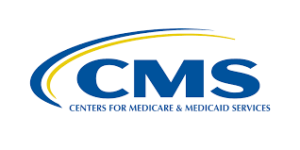The Medicare Access and CHIP Reauthorization Act of 2015 (MACRA) led CMS to create the Quality Payment Program (QPP). The QPP has two tracks, the Merit – based Incentive Payment System (MIPS) and Advanced Alternative Payment Models. In general, all Medicare eligible clinicians will be in one of these two programs. This represents the most fundamental change to Medicare since it was founded in the 1960s.
The program went into effect on January 1, 2017 and will continue indefinitely. It focuses on improvements in quality accompanied by reductions in cost. Significant monetary incentives are in place that intended to drive performance.
Under the MIPS, practices can achieve payments of -9% through up to positive 37% on every Part B Medicare payment based on number of factors and depending upon the program year. Practices will be assigned a MIPS score of between zero and 100 points. This score will determine negative or positive payment adjustments based on a performance threshold. In addition, clinicians in the MIPS will have their MIPS scores published on the Medicare Physician Compare website.
The MIPS score is determined based on performance in four categories: Quality, Advancing Care Information, Improvement Activities, and cost. In order to achieve the highest possible scores, practices should attempt to achieve high performance in the following areas:
- Quality (achieve the highest possible performance on six or more quality measures)
- ACI (meet the base score requirements and score as high as possible on the performance measures over a 90 day period)
- Improvement Activities (attest that the requirements have been met for a 90 day period)
- Cost (this category has been given a weighting at zero in 2017 and possibly 2018, however it will become one of the most highly weighted categories starting in 2019)
In the 2017 performance year, and as proposed for the 2018 performance year each of these categories will have the following weightings:
- Cost 60%
- ACI 25%
- Improvement Activities 15%
- Cost 0%
Advanced Alternative Payment Models (APMs) include existing APMs and new ones that will be developed and approved in the future. During the first six years of the QPP Qualifying Advanced APM Participants (QPs) will receive a 5% lump sum payment incentive based on annual Part B Medicare payments in the prior year. In order to qualify as a Advanced APM the entity must engage in shared risk, include quality measures similar to the MIPS, and members need to use certified EHR technology.
CMS has determined that the first two years of the QPP will be treated as a transitional years. They have elected to set the performance threshold at three points for the first performance year of MIPS (2017) and are proposing that it be set at 15 points for the second performance year of MIPS (2018). Since the majority of clinicians will be in the MIPS in 2017 and 2018 this will allow majority of practices to avoid penalties in the form of negative payment adjustments. However, failing to participate in the MIPS in 2017 will result in an automatic -4% payment adjustment applied to all reimbursement for Part B Medicare services in 2019. Failing to participate in 2018 will result in a -5% payment adjustment for all Part B services in 2020.
In order to avoid penalties based on 2017 performance all that is required is at the practice submit one quality measure through claims, a registry, or an EHR. CMS is weighted all other requirements for how quality data will be reported in future years. Practices also have the option of reporting the base measures of the Advancing Clinical Information performance category of MIPS, which was derived from the Meaningful Use of Certified EHR Technology program. However, this requires that the practice report on four or five base measures, including a security assessment. Practices also the option of reporting on one improvement activity, however the practice would need at least one clinician to engage in the improvement activity for a 90 day period. For these reasons, the most straightforward mechanism for avoiding penalties would be to report on at least one quality measure.